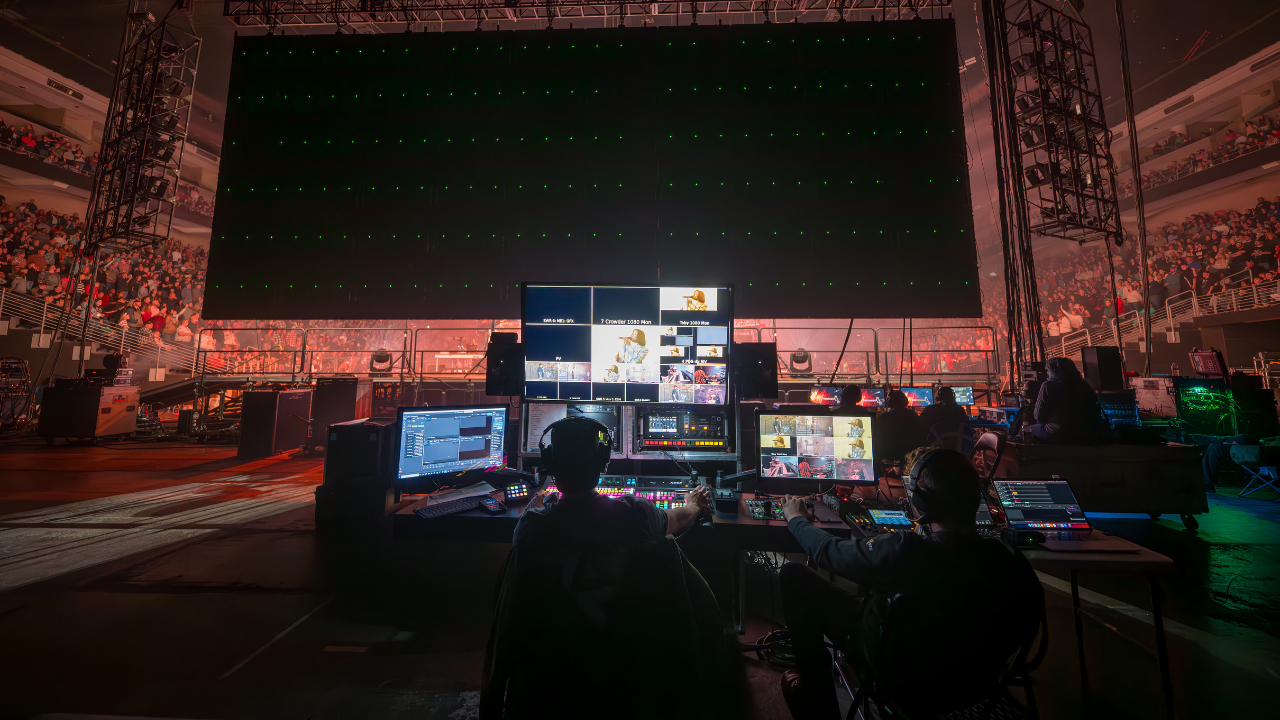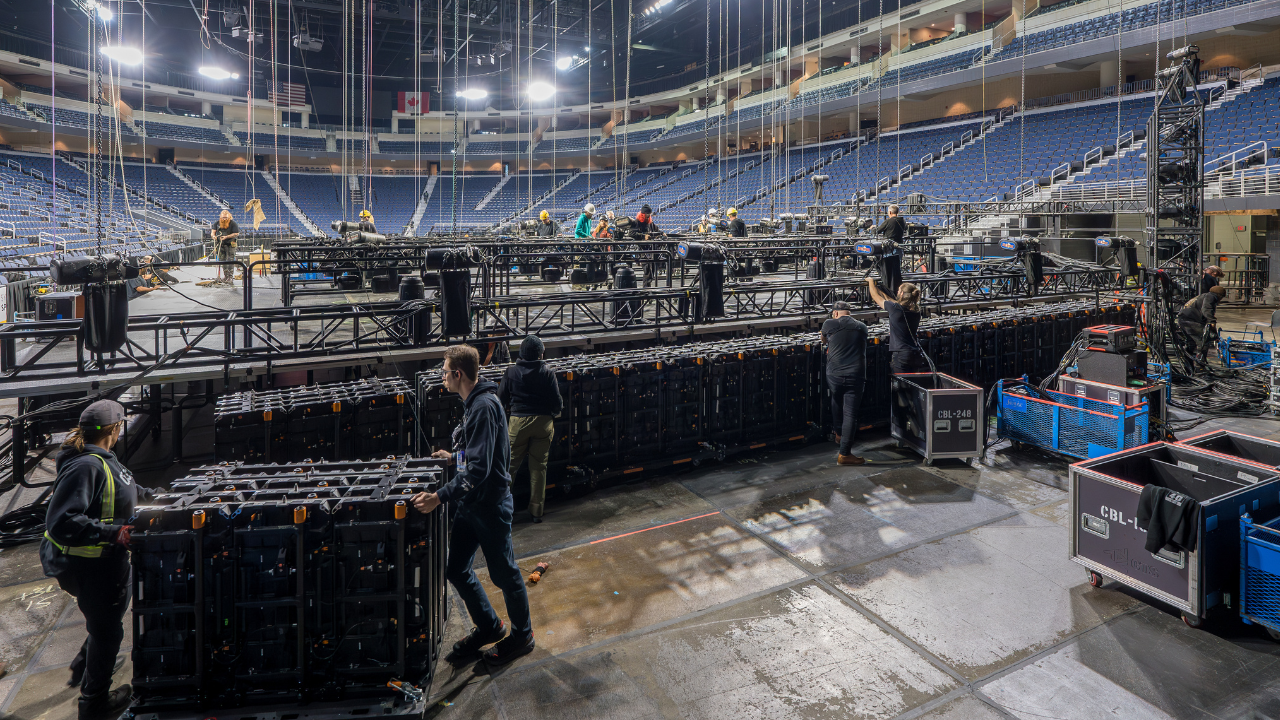7 Small Details That Make a Big Impact on Live Events
Published on: Wednesday, December 29, 2021 - 9:13am

Many of the event production teams we work with are masters at managing details. They have the unique talent of turning a client’s vision into reality while making it look easy.
We know it’s anything but easy.
Pulling off a successful event involves intricate coordination between clients, venues, suppliers and production partners. And when a single detail is lost in the shuffle, it can have a massive impact on the end results.
We’ve all been part of a well-run event that goes off with what seems like little effort, and we’ve all been part of one that’s stressful to final presentation. I’m here to tell you, the one that goes off smoothly is the one that had the best planning.
Take a look at these seven small details that will help you keep clients’ events running smoothly.
1. Design-Budget Fit
The first thing clients typically want to discuss is their vision for the design of the event. It’s the most exciting step in the planning process for everyone.
But to plan the number of LED walls, camera locations, screen placement, and lighting components, there needs to be transparency about the AVL budget right from the start.
Design and budget may seem like two separate issues, but in reality, they’re two sides of the same coin. Firm decisions about design should inform the budget, and firm decisions about budget should inform the design.
When we keep design and budget separate, there are two possible outcomes:
- The AVL partner wastes important resources planning for production elements the end client can’t afford, ultimately leading to unmet expectations.
- The AVL partner designs the event far under budget and misses opportunities to deliver the best event experience possible for the audience.
If you give your creative partner the parameters in which to dream, they can dream something pretty spectacular inside of those limits. But if they have no parameters, they’re going to dream bigger than the budget. You’re then left trying to reel in that dream after the fact, and it may be too late to start over from scratch.
By discussing budget and design together right from the start, you enable your AVL partner to come up with realistic, in-budget solutions that can satisfy your client’s vision and maximize the event experience. The entire planning process runs smoothly and everyone leaves happy.
2. Role Identification and Partner Communication
Depending on the size of the event, crew numbers can vary drastically.
In larger events, there are typically more crew members, which means it’s easier to define and separate each person’s role. But in smaller events with a smaller crew, we often find that team members wear multiple hats.
In either case, it’s important to identify exactly who is responsible for which role, and then to communicate that with everyone involved. This makes onsite communication easier to navigate in key moments.
The sooner people can start talking to each other, the more prepared they can be on event day. Instead of all communication flowing through two point people, it’s better to have multiple points of contact among event partners (also known as a Bow Tie Relationship).
This doesn’t mean that each crew member will have top-level decision-making authority, but it does equip them with the freedom to make small decisions that allow them to do their job.
If any bigger decisions come their way, like a client requesting services they don’t think are covered, they can kick that back up the chain when needed.
3. Production Logistics
Discovering that a vital piece of equipment is missing or incompatible too close to the event date can cause serious strife for clients who have to work on the fly or for technicians who prepared beforehand only to have to redo their work. To minimize the chances of that happening, once you’ve made decisions about your in-budget design, it’s important to get the production packet to your production team as soon as possible.
Many times, project managers delay sending the production packet to the AVL team because it’s not completely finalized. This is where extreme attention to detail can actually have negative consequences. By waiting until every detail in the packet is finalized, you’re taking away valuable runway time the team could be using to prepare for the event, and there’s a missed opportunity to get everyone on the same page with the same goals early on.
Instead of waiting for perfection, send over a working copy of the packet when it’s 50% to 75% complete so the team can get started or help make changes or suggestions about what is needed. Then send over the additional details as they’re finalized. This gives you the best chance of avoiding any major equipment issues in the final hours leading up to the event.
4. Travel Schedule and Call Times
Regardless of how much planning goes into an event, there will always be unexpected issues that pop up at the last minute. Handling these situations as quickly and efficiently as possible often depends on fast thinking and a positive attitude from key crew members.
While you can’t account for every possible problem that might need to be solved, there are several (seemingly small) things you can do to maximize your team’s energy and mental acuteness. From our experience, one of the most impactful ways is by coordinating call times and transportation to give the crew adequate rest.
For travel to and from the event, don’t book the last flight in and the first one out. Be sure to leave room for delays, meal planning, proper rest and late nights.
Bring in crew needed for early or late calls only. Don’t have the whole team come in, because you don’t know what is needed. This goes back to the section on Role Identification for events. Let’s be honest — the days are long and the job is intense. It will help if you can find ways to call on people’s key skills when it matters most.
5. Crew Meals
In addition to making sure your crew is well-rested, another often-overlooked detail is how they’ll be fed. Giving the crew time to step away and eat is absolutely necessary to make sure everyone can perform at their best.
In addition to scheduling time to eat, it’s important to make sure everyone has a way of getting food. If you’re not providing meals at the venue, make sure to communicate the options to the crew for nearby vendors or restaurants so they can make arrangements.
In reality, tech teams usually have the closest contact with clients. Making sure they have time to rest is vital to them being at their best when it’s time to perform — because it’s not if a last-minute issue will arise, but how the team reacts in those moments that the client will remember.
6. Coordinated Agendas
Another commonly overlooked detail involves setting the schedule for load-ins, run-throughs, rehearsals and sound checks.
This relates strongly to the section on Production Logistics above. When you invite the production team into the process before final schedules are dictated, they can supply valuable insight and perspective to you and your client to make sure each time slot is budgeted correctly. Consult them accordingly to make sure no big detail has slipped through the cracks and the agenda is realistic.
7. Post-Event Reporting
Finally, one of the most overlooked but impactful details we see is something that happens after the event is finally over. At the end of an event, it’s incredibly valuable to create a post-event report to help you do an even better job in the future.
Since many events occur on an annual basis and involve the same key planners, vendors, and professional partners, you can save yourself from future headaches by documenting the small details while they’re fresh in your mind.
In our industry, it’s uncommon to have a debrief after an event comes to a close. Everyone just wants to go home and get some rest. But a post-event meeting where key people reflect on and record what went well and what could be corrected will help you better plan for the future.
For example, without proper documentation, would you remember which extra piece of equipment was added at the last minute? Or that the venue only had an 8-foot rollup door, doubling the amount of time it took to load-in equipment?
Putting together a post-event report does your future self a favor. Specifically regarding AVL issues, create a list of obstacles, unnecessary equipment, change orders, venue details, and anything else you’d find useful to make next year’s event run even better than this year’s.
Conclusion
The success of a live event is often determined by the smallest details. Although it may seem trivial at the time, effective management and coordination of aspects such as production logistics, crew travel schedules, meals, and post-event evaluation can have a paramount impact on an event.
Whether it’s a discussion on event design, communicating role clarity among crew members, or properly planning and accounting for all necessary equipment, it’s crucial to be on your A-game. If you consistently prioritize goal alignment between all parties involved, there’s less room for error. It’s always better to be overprepared; your careful planning and forethought won’t go unappreciated, either by the client or your team.



